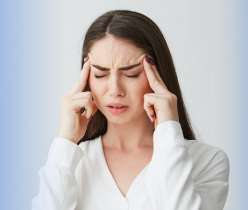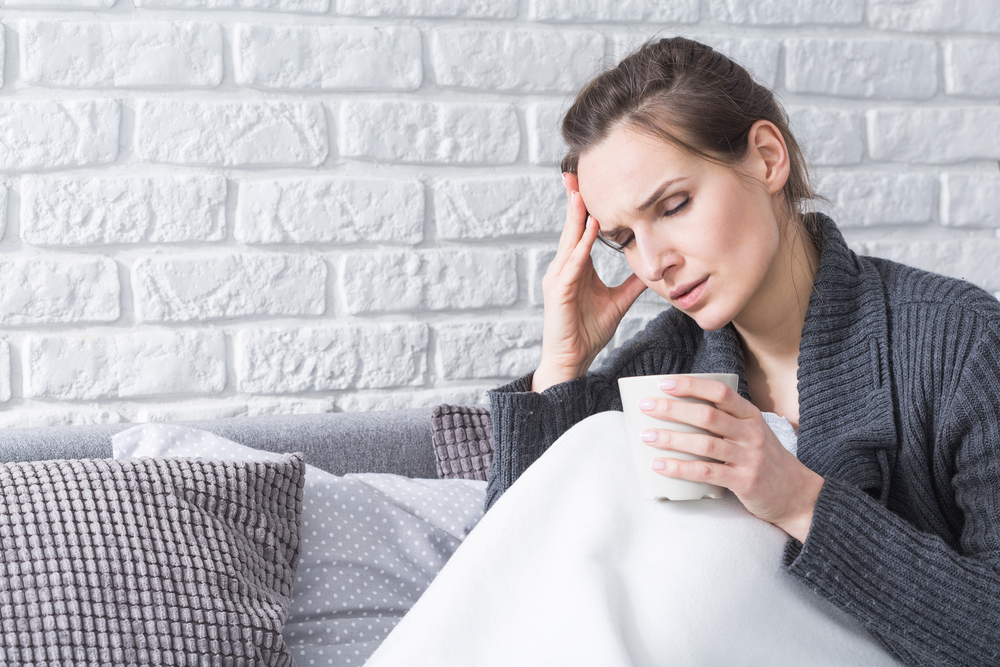Migraine is a disabling primary headache disorder that directly affects more than a billion people across the world. It can feel worrying when you begin to experience regular or severe headaches.
Despite its widespread prevalence, migraine headaches are underdiagnosed and under-treated.
Migraine occurs as recurrent attacks of headache with a range of accompanying symptoms. In about one-third of individuals with migraine, headache is sometimes or always preceded or accompanied by transient neurological disturbances, referred to as migraine aura. Furthermore, a very small population of those affected develop chronic migraine, which attacks become highly frequent.
Types of migraine
The most common migraine categories are migraine with aura and migraine without aura. An aura is defined as a phase of the migraine before a headache begins. Other types of migraine include abdominal migraine, chronic migraine, menstrual migraine, hemiplegic migraine, migraine without headache, retinal migraine (ocular migraine), and status migranosus.
Causes of migraine
The exact cause of migraine is not clear. Clinical research shows that it is caused by swelling of the blood vessels in the scalp and tissues around the brain, causing more blood to pump through the brain. Changes in the activity of the brain and chemicals also play a role. Healthcare specialists believe some triggers give rise to a migraine headache, although determining an individual’s trigger is not always easy. Some common triggers are explained below:
-
- Flickering lights from a TV or computer screen
- Chemicals, specifically those found in perfume and platform
- Alcohol, especially wine
- Exercise
- Hunger
- Stress, fatigue, or excitement
- Light, heat, or noise
- Cheese, nuts, oranges, coffee, tomatoes, chocolate, some food additives and preservatives
- Relaxation after a stressful working week, you relax, and a migraine attack occurs.
- Hormonal changes (use of hormone pills, periods, menopause)
Symptoms
Common migraines symptoms are characterized by a moderate to severe pounding or throbbing headache. Vestibular migraine may or may not involve head pain along with vestibular symptoms such as imbalance, vertigo, nausea, and vomiting. Pain from a migraine headache can be squeezing, pulsing, and worse, further movement and normal activities. Other symptoms include:
-
- Warning signs include blurred vision, numbness, flashing lights, funny smells, and tingling
- A dislike for bright lights
- Nausea and vomiting
- A dislike for loud noises
The migraine attacks may be few and far between or frequent and severe.
Treatments for migraine headaches include preventive medications and a range of non-pharmacological therapies. Despite these treatment options as well as the comprehensive diagnostic criteria, clinical care remains suboptimal misdiagnosis, and under-treatment of migraine is substantial public health. According to research reports, preventive medication for migraine is used by only 2 to 14 % of eligible individuals, which is an alarming finding that calls for global action. A comprehensive approach is required to facilitate accurate diagnosis and evidence-based management.
Migraine attacks vary between people, and so does the treatment. Many successful treatments are available these days. Numerous migraine therapies can be used to help a patient to get the best migraine relief. If a migraine is in the early stages, simple medications such as aspirin or aspalgin, usually 900 mg, and anti-nausea medicine may be enough to provide relief. Let your healthcare professional know if you are not able to take aspirin. Also, don’t take any migraine-related medication without consulting your doctor.
In severe conditions, stronger anti-migraine medications and hospital treatment may be required. Pethidine is no longer used for the treatment of migraine as more effective medicines are now available. No clinical tests are required unless the health care professional feels there may be another reason for your symptoms.
Home care
Simple migraine treatment at home may help you deal with throbbing headaches:
-
- Lie in a calm, cool, and dark room.
- Avoid drinking coffee, orange juice, or tea.
- Avoid reading or watching television.
- Do not move around too much.
- Place a cold flannel on your neck and forehead.
- Some individuals find relief from sleeping off an attack.
- Take painkillers as directed by the healthcare professional.
In many cases, the pain stops, and the patient feels better with migraine remedies. Some may be left with a hangover that may last several hours or days. This can leave you weak and tired with a mild headache. Children may be required to stay home from work or school.
If you have frequent attacks, you may be prescribed daily treatments that can help you. Migraines tend to get less frequent and less severe as you get older.
Prevention
Find out with the help of your healthcare specialist what may have caused the attack and avoid that trigger. For example, avoid red wine if you suspect this is the cause. Speak to your healthcare specialist about treatment options for preventing or reducing attacks. Complementary treatments may help, although there is not enough evidence. Examples include relaxation (meditation, yoga), aromatherapy, acupuncture, hypnotherapy, and biofeedback.
Migraine medicine
Different types of migraine meds are available for different types of migraine that can relieve the symptoms of a migraine attack. A migraine headache can be treated with two types of drugs, namely abortive and preventive. Some migraine medications are specifically made to stop a migraine, whereas others are helpful for migraine prevention.
Acute medications for migraine
The aim of acute treatment, also known as abortive treatment, is to stop a migraine headache once it starts. Acute medications are used to stop a migraine when you feel one coming or once it has begun. One can take these acute medications by self-injection, skin patch, mouth, or nasal spray. The type of medications are specially discovered for people who get nausea or vomiting related to their migraine, and they work quickly. The first line of migraine treatments may be one of the OTC pain medications and combination pain medications, including ibuprofen, isometheptene-dichloralphenazone-acetaminophen, Excedrin migraine, and Motrin migraine pain.
Prescription NSAIDs (non-steroidal anti-inflammatory drugs) include diclofenac potassium and indomethacin. Other acute treatments include triptans, which are used only to treat headaches and do not relieve pain from back problems, menstruation, or other conditions. Individuals with certain medical conditions should not take these medicines. The triptans include sumatriptan, rizatriptan, frovatriptan, almotriptan, naratriptan etc. In case a migraine attack lasts for 72 hours or more, your healthcare professional may prescribe the steroid drug prednisone to shorten it. The medication can have serious side effects, including sleep issues and more headaches. Drugs such as droperidol, chlorpromazine, prochlorperazine, and metoclopramide are sometimes used for nausea associated with migraine headaches along with migraine treatment. Some medications that are used for headaches are not particularly used for migraines. These include narcotics, barbiturates, and analgesics. Since these medications can be habit-forming, they are less desirable than specific headaches mentioned above. Magnesium for migraine is also an option. Magenium is frequently used in tablet form to prevent migraine. These medications should be used primarily as a backup for certain situations when a specific medication does not work. To avoid any medicinal side effects, always follow the treatment prescribed by your doctor to treat your condition.




